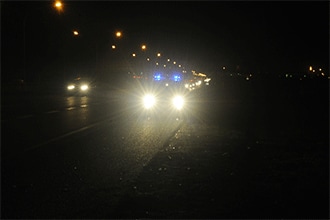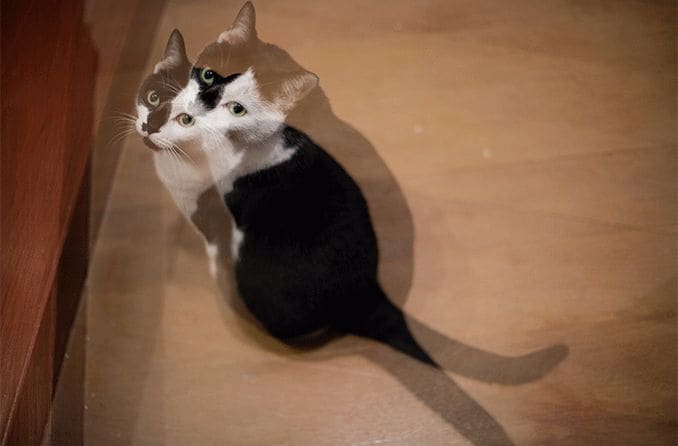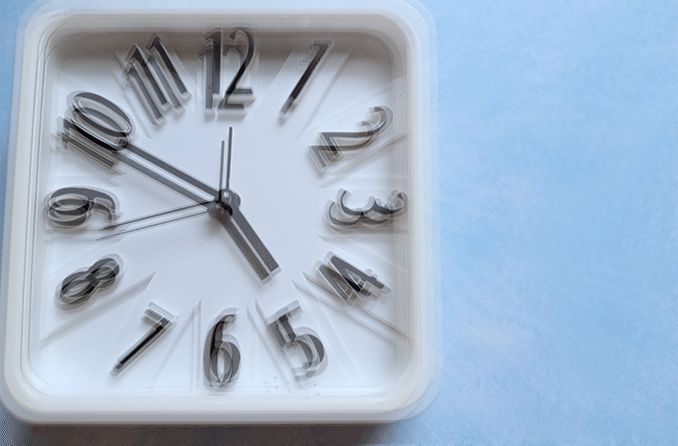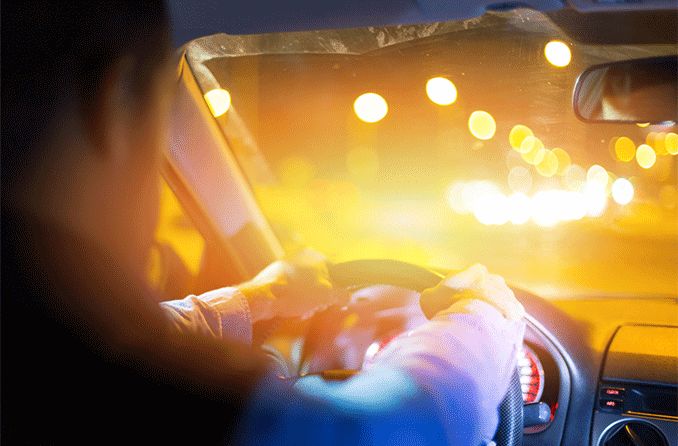Why are there starbursts in my vision?
Starbursts can appear in your vision when something changes the way light enters your eyes. When people see starbursts, they’re usually most bothersome around bright lights at night, when they cause thin rays of light to radiate from the center of each light source.
At night, this star-shaped glare will appear around each streetlight and car headlight in your field of view, making it harder to drive. They can be distracting and, in some cases, dangerous.
While similar, starbursts look a little different than the halos that sometimes appear around lights.
What causes starbursts around lights?
Many different eye conditions can cause a starburst effect around lights:

Starbursts can make it harder to see cars, pedestrians and signs when you're driving at night.
Cataracts – A clouding of the eye’s natural lens that becomes more common with age. In addition to starbursts, cataracts can cause hazy vision and sensitivity to light.
Astigmatism – A vision problem that affects the way the cornea or lens is shaped. Astigmatism causes light to bend the wrong way and can affect your driving at night.
Glaucoma – Irreversible damage to the optic nerve caused by high fluid pressure inside the eye. With a timely diagnosis, glaucoma can often be managed before damage occurs or worsens.
LASIK eye surgery – The most common laser surgery used to correct refractive errors. Starburst vision can be a temporary side effect or, less commonly, a long-term result of a surgery complication.
Higher order aberrations – Refractive errors that are more complex than nearsightedness, farsightedness and astigmatism. These conditions can’t usually be treated with traditional corrective lenses.
Multifocal intraocular lenses (IOLs) – Prosthetic lenses that can be used to replace the clouded lens during cataract surgery. Like multifocal glasses, multifocal IOLs correct both near and far viewing distances.
Keratoconus – A progressive disease that causes the cornea to grow weaker and become misshapen over time. It can lead to vision problems and different degrees of vision loss.
Fuchs’ dystrophy – A degenerative eye disease that usually affects both corneas. Fuchs’ dystrophy can also cause eye pain, light sensitivity and foggy vision.
Can starburst vision be treated?
It depends on which condition is causing the starbursts to appear. If starbursts are caused by cataracts, for example, cataract surgery may be able to help.
If you haven’t received a diagnosis, an eye doctor will need to examine your eyes before they can decide if treatment is needed.
Starbursts aren’t always serious, but they can be a sign of an eye problem that needs to be treated quickly. If you start to notice starbursts in your vision, schedule an appointment with an eye doctor.
READ NEXT: Do night driving glasses really work?











